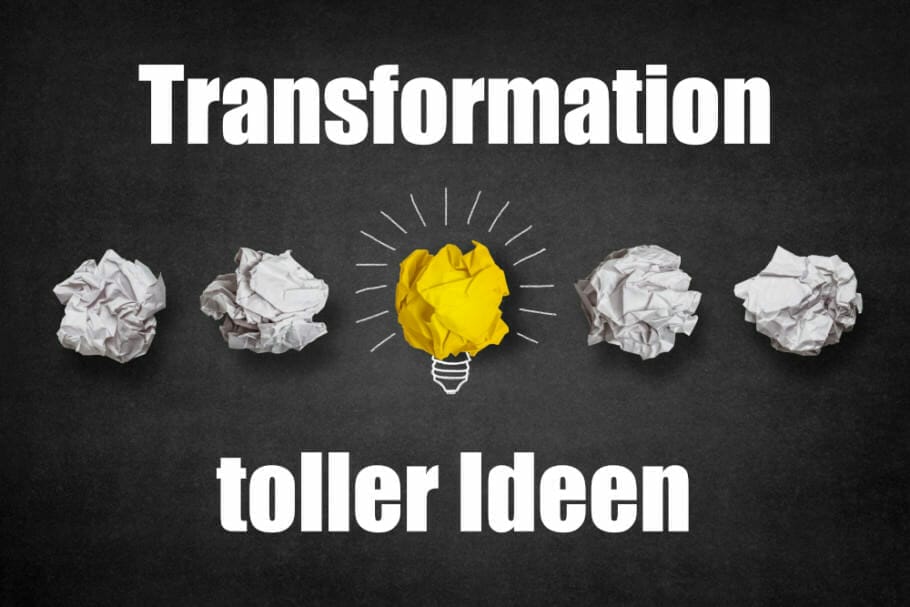More success stories?
Im Shop or our Newsletter you are guaranteed to find what you are looking for:

For their successful, good life Information you really need: Government-funded publisher, awarded the Global Business Award as Publisher of the Year: Books, Shops, eCourses, data-driven AI-Services. Print and online publications as well as the latest technology go hand in hand - with over 20 years of experience, partners like this Federal Ministry of Education, customers like Samsung, DELL, Telekom or universities. behind it Simone Janson, German Top 10 blogger, referenced in ARD, FAZ, ZEIT, WELT, Wikipedia.
Disclosure & Copyright: Images created as part of a free collaboration with Shutterstock.
By Claudia Simon (More) • Last updated on October 21.10.2023, XNUMX • First published on 09.07.2019/XNUMX/XNUMX • So far 5240 readers, 2450 social media shares Likes & Reviews (5 / 5) • Read & write comments
In order to show the benefit of an idea, it must be communicated convincingly. Thinking and communication tools such as the logic of causality from the Theory of Constraints ensure that the Transformation great ideas .

How often do we not do something because we negative fear consequences? And how often do we regret something we've done? There is probably hardly anyone on this Ask replies with "Never". Some dare a lot and regret a lot, others dare little and also regret it in the end.
All good reasons to take a closer look at how the transformation of great ideas succeeds - from the first flash of inspiration to a strong one Presentation up to successful implementation.
We all move in an environment of cause and Effect is determined. Something causes something else. Cause-effect relationships can be very complicated and also seemingly illogical or act, especially in complex systems.
Almost everything we do in Everyday life as "Problem' is actually the effect of another cause. Causality logic means, on the one hand, that the causes are sufficient to achieve the effect. And on the other hand, that if all causes are present, the effect must necessarily occur.
A causal relationship is usually presented in the form of a causality diagram and read as "When I fall into the water, dann I'm wet. "To fall into the water is adequatelyso that I get wet, and when I fall into the water, I will compellingly wet. Moment! Is there a situation in which you do not have to get wet, even if you fell into the water?
We recognize that the logic is not yet watertight, because in formulating the example we had information or assumptions that we did not explicitly make. For example, the assumption, "I wear normal street clothes." This missing information is added as "contributing causes" in the diagram and linked to an ellipse indicating a logical "and" connection. If two or more causes without a connecting ellipse point to an effect entity, it means an "or" connection. Both causes can produce the effect independently of each other: When I fall into the water ... or when I run into a lawn sprinkler, dann I'm wet. "
To the human Brain There are a few ways to make working with causality logic easier Regulate, how causality logic diagrams should be formulated:
An important area of application of the logical branch is the constructive one Feedback for ideas of others. On the one hand, we must ensure that Implementation the idea does not lead to deterioration. On the other hand, the inventor of an idea, who often takes a lot of time and Energy invested in development to be commended for it.
On the other hand, he understands the pure enumeration of possible negative effects as Criticism. A sensible approach is therefore to first praise the idea, only then point out possible negative consequences and work on one together Solution to work.
Showing the positive effects is the best way to praise an idea. This means that you can make good use of a positive branch that shows the positive effects of the idea. Afterwards one shows with a negative branch, which negative effects could develop.
Causality logic makes the cause-and-effect relationships between idea and impact obvious. What is the effect of showing the reasoning chain to the inventor in this order? He realizes that he has seriously dealt with his idea and wants to help him with its implementation. He will most likely have his own solution for the negative side effect listed and call - or he will continue to think about it. In any case: a positive outcome of the conversation.
"People think logically and emotions are also logical.” Is this claim true? Most would probably answer: No! We say yes! Logic means that something follows causal relationships.
When someone is angry, is clearthat this anger is not groundless, but is causally related to a trigger. Triggers are usually made experiences, needs and thought patterns. A logical cause-and-effect chain can show how this necessarily leads to a certain emotion. That is, in exactly the same situation, the same emotion would occur.
If a person seems to be acting illogically (from my point of view), it's because I don't understand their action from the same Perspektive see like her. So I lack information to see the same logical chain of cause and effect. Instead of the person for their (from my point of view) "illogical" Behavior therefore, to condemn makes it more Sinn, in the Conversation to identify the differences in our thinking that caused this misunderstanding.
Emotions are part of intuition and can therefore provide clues to facts and relationships that we do not consciously perceive. Is an emotional rating sufficient? No, emotions can lead the wrong way and also arise from wrong assumptions. So, like every thesis, they have to be consciously analyzed. The categories legitimate reservations allow to objectify a discussion as a whole - without ignoring the emotions.
Acquire this text as a PDF (only for own use without passing it on according to Terms and conditions): Please send us one after purchase eMail with the desired title supportberufebilder.de, we will then send the PDF to you immediately. You can also purchase text series.
4,99€Buy
You have questions about Career, Recruiting, personal development or increasing reach? Our AI consultant will help you for 5 euros a month – free for book buyers. We offer special ones for other topics IT services
5,00€ / per month Book
Up to 30 lessons with 4 learning tasks each + final lesson as a PDF download. Please send us one after purchase eMail with the desired title supportberufebilder.de. Alternatively, we would be happy to put your course together for you or offer you a personal, regular one eMail-Course - all further information!
29,99€Buy
If our store does not offer you your desired topic: We will be happy to put together a book according to your wishes and deliver it in a format of yours Choice. Please sign us after purchase supportberufebilder.de
79,99€Buy
 Claudia Simon is managing director of VISTEM GmbH & Co. KG. She is a management consultant for strategy and organizational development in companies and, together with a team of experts, advises national and international companies on their growth development. Simon completed an apprenticeship as an industrial clerk and studied business administration at the University of Applied Sciences in Worms. After training as a legal clerk and working as an assistant to the management in larger law firms, where she was involved in the implementation of a management system, among other things, she headed the training and consulting department of a company specializing in legal software. In addition to her work as a management consultant, Caudia Simon coordinates the network of German-speaking experts , Users and interested parties to the Theory of Constraints. More information at www.vistem.eu All texts by Claudia Simon.
Claudia Simon is managing director of VISTEM GmbH & Co. KG. She is a management consultant for strategy and organizational development in companies and, together with a team of experts, advises national and international companies on their growth development. Simon completed an apprenticeship as an industrial clerk and studied business administration at the University of Applied Sciences in Worms. After training as a legal clerk and working as an assistant to the management in larger law firms, where she was involved in the implementation of a management system, among other things, she headed the training and consulting department of a company specializing in legal software. In addition to her work as a management consultant, Caudia Simon coordinates the network of German-speaking experts , Users and interested parties to the Theory of Constraints. More information at www.vistem.eu All texts by Claudia Simon.
Post a Comment